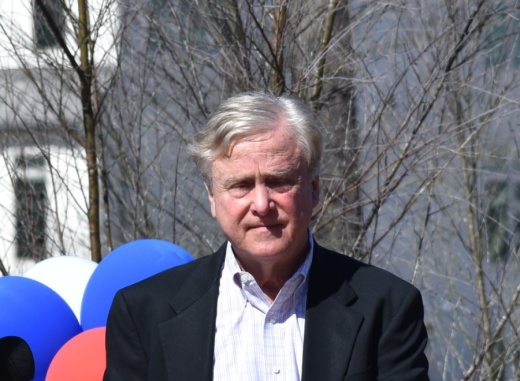Since then, most of the community’s villages have been built out, and the company has outlined its plan for remaining commercial development. Heineman talked with Community Impact Newspaper about career highlights and what he expects to see in the coming years when he will stay on as a consultant and member of various township committees.
When and how did you realize The Woodlands would be a very long-term commitment for you?
I never imagined I would work on one project for 50 years. ... I loved to travel, explore new things; I love to experience different environments. After I graduated from Rice [University] in architecture, I worked for a year prior to applying to and going to Harvard, and during that year I worked for four architecture firms. My longest job was three months.
So during that time I realized I was more interested in urban planning, urban design and the fabric of a city, how buildings and different systems interrelated rather than just designing different buildings.
As far as the long-term commitment to The Woodlands, I think it was gradual, but it was Mr. [George] Mitchell, his vision, his optimistic attitude was infectious, ... the future was more important than planning the present. [It was a] huge challenge and opportunity to design and build a new community the size of The Woodlands from scratch.
What are some of the achievements you are most proud of? What was the most challenging?
Preservation of the actual environment, that was the goal from Mr. Mitchell for the staff. ... The forest preserves are around every parcel; landscape standards are around parking lots, around buildings; [there is] a percentage coverage ratio for individual sites, and then preservation of the 28% of the total acreage of The Woodlands into open space. Another one was the mobility system. The mobility system had several challenges. How do you sell lots to homeowners 8 miles from I-45? ... You have to change the commute from a Westheimer-type road to a different type of road with higher speeds where you could coordinate signals and where you could add grade separations where major thoroughfares cross.
What future projects or changes in The Woodlands are you most looking forward to or hoping to see come to fruition?
With development in the villages ramping down, the future is primarily concentrated in the Town Center area, and again future development in the Town Center along The Waterway will continue to enhance the experience along The Waterway. ... I’m looking forward to 10 Waterway Avenue, the mixed-use development across from Waterway Square, that will enhance the Waterway Square area and will include a pedestrian view from Waterway Square to Timberloch.
Where are you expecting additional development to be concentrated?
[There will be] more development along the Timberloch-Waterway corridor all the way to I-45 that will enhance The Waterway, the Town Center and The Woodlands.
What are some of the challenges developers and planners will need to contend with in the years to come?
I think mobility is still a major topic particularly along I-45, and ... I-45 further south going through Houston. ... A lot of cargo ... is going by truck from the port [of Houston] to Dallas or Kansas city along I-45. There’s a big public challenge regarding how you accommodate the through traffic [separately] from the local traffic, particularly on a major corridor such as I-45. That’s a major problem in the future that needs to be resolved. And obviously in the future there is the issue of autonomous vehicles, with the advent of that how that will change commuting patterns, and we’ll leave that for another discussion.
How will you continue to be involved in the community in your retirement?
I’ll be involved still at the various design review committees in The Woodlands, the development standards committee, [the] review committee, community standards committee and the other roles ... will probably involve mobility and public art ... I’ll still be involved in the art bench committee; I think that is a significant enhancement to The Waterway. Planning and developing of The Woodlands has truly been a shared team effort.





